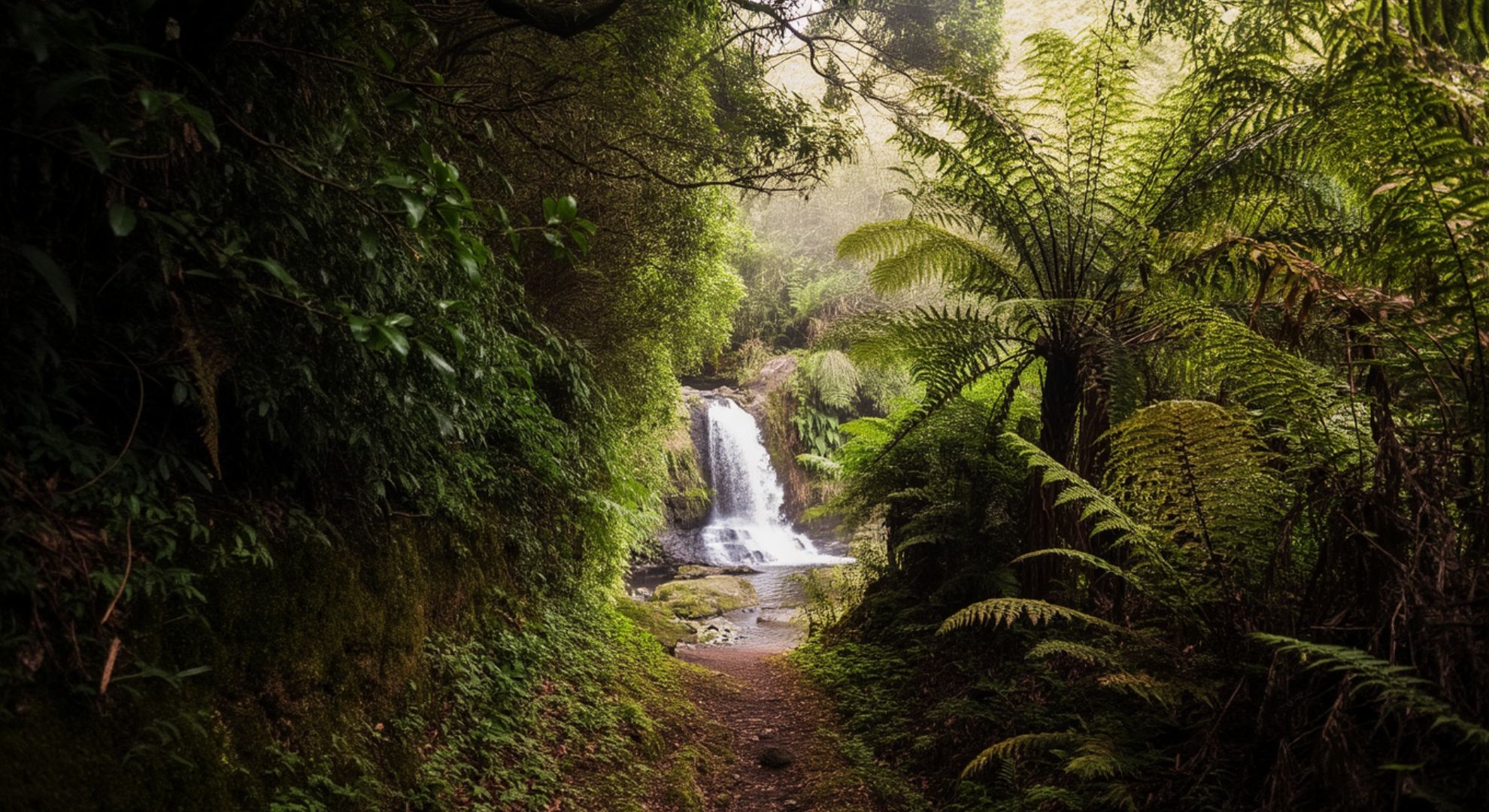The Coromandel hides a quiet secret, a cascade that waits without fuss. The track is hinted more than signed, the pool is glass when the wind rests. You hear it before you see it, a murmur threading the nikau and fern.
The air feels green, the rock feels ancient, and the path breathes with leaf litter. Footprints are rare, laughter is softer, and the sun plays a brief visit before slipping away.
Getting there without giving it away
Locals use landmarks, not GPS coordinates, and that’s part of the spell. Head inland from the coast, then veer where the pines surrender to native bush. A rough spur dips to a stream, and a single ribbon of water announces your arrival.
You don’t need a map, you need a pace that notices kererū and moss. If you find a crowd, you went to the wrong waterfall.
Why it’s still empty
There’s no carpark, no café, no cell signal to bait a queue. The fall sits just far enough from the main loop to deter casual detours. Even in January, when beaches roar, this pool keeps quiet time.
The rock is dark and slippery, the water is clear and startlingly cold. Selfie sticks feel loud here, and the forest politely disagrees with hype.
When water whispers, not roars
On still mornings, the drop is a curtain, not a shout. Shingle hisses softly, and damselflies draw blue stitches over the surface.
After heavy rain, the tone deepens, a baritone rolling through the gorge. Mist drifts sideways, and every fern becomes a harp for droplets.
What to bring and how to tread lightly
You need almost nothing, and yet a few smarts make the day sing:
- Light shoes with bite, a compact layer, a small bottle you refill from treated sources, a dry bag for the phone, and respect for the track edges so roots keep their grip.
“Leave no trace is not a slogan; it’s a promise we keep to each other,” says a volunteer ranger, pausing to watch a tūī comb the flax.
How it stacks up
You might ask whether the secret stack is worth the effort compared to its famous neighbors. Here’s a straight comparison for the curious traveler.
| Waterfall | Crowds (summer) | Access road | Walk length | Pool depth | Facilities | Vibe |
|---|---|---|---|---|---|---|
| Hidden Coromandel Cascade | Almost none | Gravel, rutted | 15–25 min, uneven | Mid-thigh to chest | None | Meditative |
| Waiau Falls | Moderate | Sealed | 5–10 min, easy | Knee to waist | Parking, signs | Family-friendly |
| Owharoa Falls | High | Sealed | 2–5 min, very easy | Shallow | Parking, signs | Photogenic bustle |
The table doesn’t tell you about the wētā under a log, or the cool smell of decomposing rimu. But it hints at the trade, convenience for quiet.
Safety without the sermon
Rocks here are slick, even when the sun looks gentle. Test every step, and keep knees soft as you shift weight. If water runs brown, don’t swim; if thunder is near, leave the valley to itself.
Tides don’t matter inland, but daylight does shrink fast under canopy. Tell someone your plan, and keep your ego out of the river.
A local voice
“I’ve brought maybe three people here in ten years,” says Mere, a lifelong tramper from Thames. “It asks you to listen, and most folks don’t have the time.”
Another regular shrugs with a smile: “You can keep your secrets by simply leaving out the hashtags.”
What you’ll actually remember
Not the exact height, not the GPS pin, not even the shape of the lip where water breaks. You’ll remember the temperature of courage as you wade, the sting that turns to clarity.
You’ll remember how your breath matched the fall’s tempo, and how your shoulders finally lowered into the ordinary miracle of green.
If you go, go like this
Arrive early, breathe quiet, learn a bird’s name before you leave. Pack your rubbish, pocket your praise, and let the forest keep most of the story.
The best places don’t need fanfare; they need your care and a step that’s lighter than your shadow. Leave it as empty as you found it, and it will always feel full.
